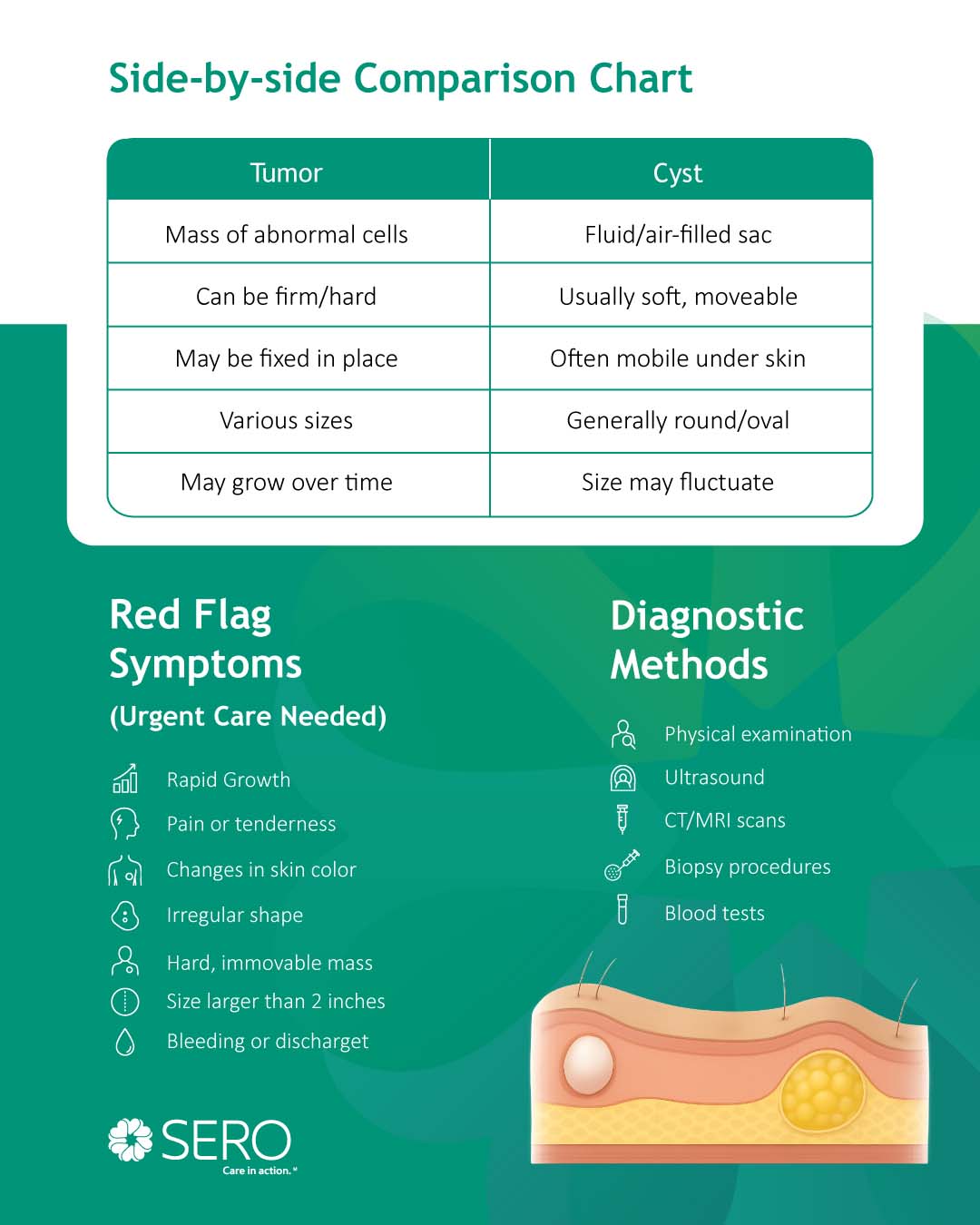When a new bump appears on the skin or slightly beneath it, it’s natural to fear the worst — cancer. But oftentimes, these protrusions are benign tumors or cysts.
Tumors and cysts are two types of growths. Though they look similar, they have very distinct causes, treatments, and risk factors.
A tumor is a mass of abnormal cells, whereas a cyst is a growth that’s filled with fluid, air, or other bodily substances.
In this article, we discuss the differences between a tumor and cyst. We also provide information to help you determine if your growth is cancerous.


